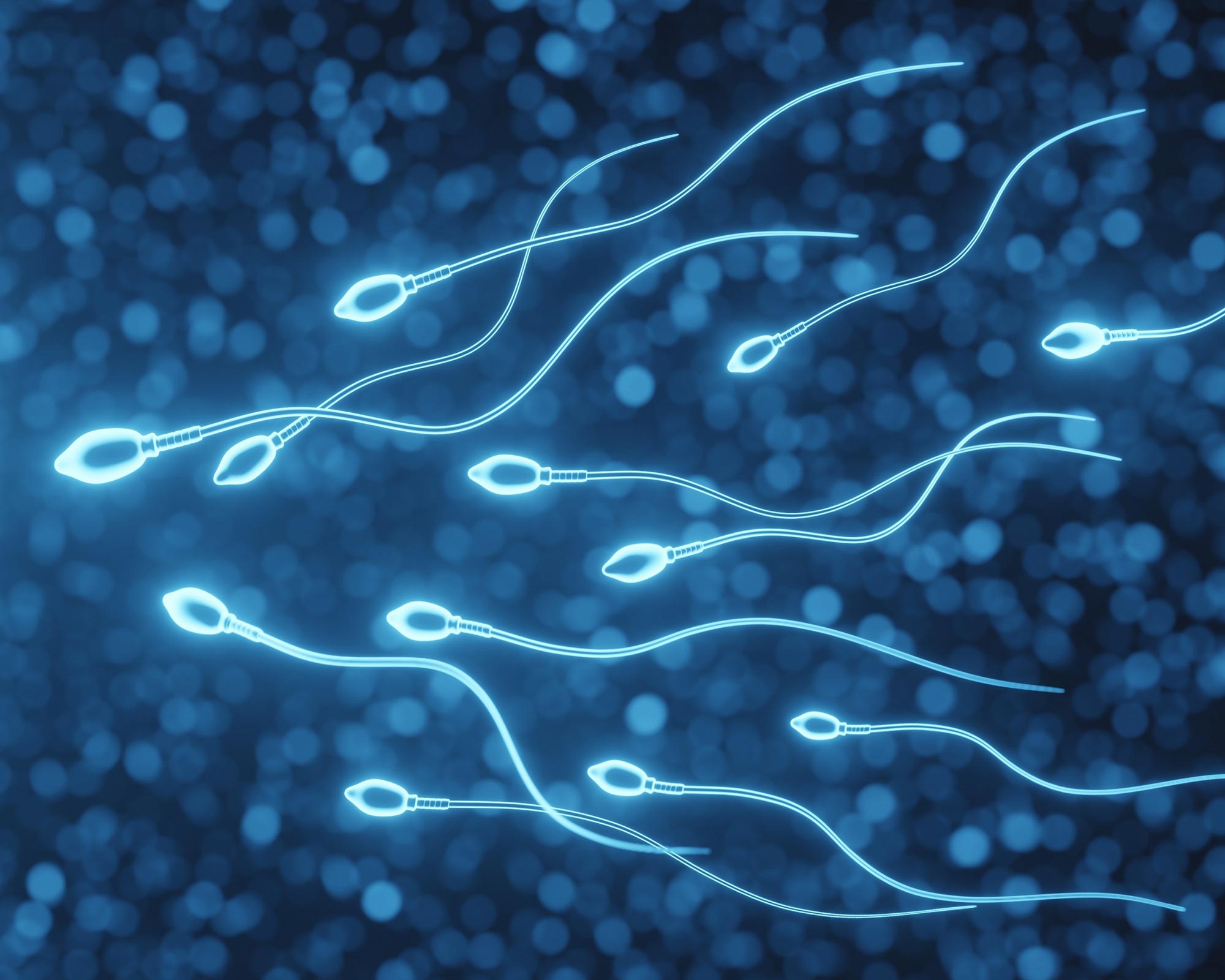Nowe badania sugerują, że nieprawidłowości związane ze starzeniem się plemników mogą być nasilane przez wyższy BMI.
Według analizy pojedynczych komórek jąder poddanych autopsji, nieprawidłowości związane ze starzeniem się plemników mogą być nasilane przez wyższy wskaźnik masy ciała (BMI). Nowe badanie zostanie opublikowane w czasopiśmie komórka rozwojowa Dzisiaj (2 maja)drugi skrót2022).
Pomimo dobrze ugruntowanego faktu, że starsi mężczyźni wykazują gorsze zdrowie reprodukcyjne, starzenie się jąder jest nadal słabo poznane zarówno na poziomie molekularnym, jak i genomowym. Ponadto nie jest jasne, czy na spadek ten ma wpływ styl życia, czy zmienne środowiskowe.
„Starzenie się może powodować kombinację niewielkich zmian molekularnych, które zwiększają wrażliwość jąder na dodatkową dysregulację, z wyraźną dysregulacją występującą, gdy starzenie się łączy się z dodatkowymi czynnikami, takimi jak otyłość” – mówi współautor Bradley Kearns z University of Utah School of Medicine.
wskaźnik masy ciała (BMI) Jest to wartość obliczona na podstawie masy (wagi) i wzrostu osoby. W szczególności definiuje się ją jako masę ciała podzieloną przez kwadrat wysokości ciała. Jest to wygodna reguła stosowana do szerokiej klasyfikacji osoby jako osoby z niedowagą, prawidłową wagą, nadwagą lub otyłością na podstawie masy tkanek (mięśni, tłuszczu, kości) i wzrostu.
Aby rozwiązać tę lukę, Kearns i współautor badania Jingtao Guo, również z University of Utah School of Medicine, wykorzystali pojedynczą komórkę[{” attribute=””>RNA sequencing to profile more than 44,000 cells obtained from autopsy testis samples from four young men and eight older men. The older donors were screened for having offspring as young adults to ensure early-adult fertility.
The young samples clustered together and did not display molecular signatures of aging or a disrupted ability to produce sperm cells. Surprisingly, the older samples showed only modest age-related changes in stem cells that give rise to mature sperm, but were clearly classified into two distinct groups. The first group displayed an intact ability to produce sperm cells, with only weak molecular signatures that distinguished them from young samples. By contrast, the second group showed a very limited ability to develop sperm cells.
Notably, BMI emerged as a critical factor among older individuals. All donors from the first group had levels lower than 27, whereas all donors from the second group had levels higher than 30. Taken together, the results reveal possible molecular mechanisms underlying the complex testicular changes associated with aging, and their possible exacerbation by concurrent chronic conditions such as obesity.
Moving forward, larger patient cohorts are needed to fully validate the results. Another avenue for future research is to explore whether the testicular cells of older, heavy-set males show unique aging signatures, or whether they simply display accelerated aging. It is also not clear whether diet, exercise, diabetes, or altered hormone production play a role in testis aging. In addition, determining at what age the dysregulation of supporting testis cells emerges, and whether and how it may be reversible, may lead to improved medical guidance for older men.
“Our study reveals potential biomarkers for diagnosis of testis aging and directions for potential treatment of aging-related subfertility,” says Guo. “It also serves as a foundational dataset for the scientific community to study how human testis and fertility respond to aging.”
Reference: “Single-cell analysis of human testis aging and correlation with elevated body mass index” by Nie et al., 2 May 2022, Developmental Cell.
DOI: 10.1016/j.devcel.2022.04.004
This work was supported by the National Institute on Aging.

„Odkrywca. Entuzjasta muzyki. Fan kawy. Specjalista od sieci. Miłośnik zombie.”






More Stories
Światowy Sojusz na rzecz Szczepionek i Szczepień (Gavi) i UNICEF z radością przyjmują zatwierdzenie nowej doustnej szczepionki przeciw cholerze – Świat
Paciorkowcowe zapalenie opon mózgowo-rdzeniowych utrzymuje się w Botswanie pomimo dużego zasięgu leczenia przeciwretrowirusowego
Integracyjne i alternatywne terapie skoncentrowane na pacjencie w neurologii: dr Carolyn Bernstein